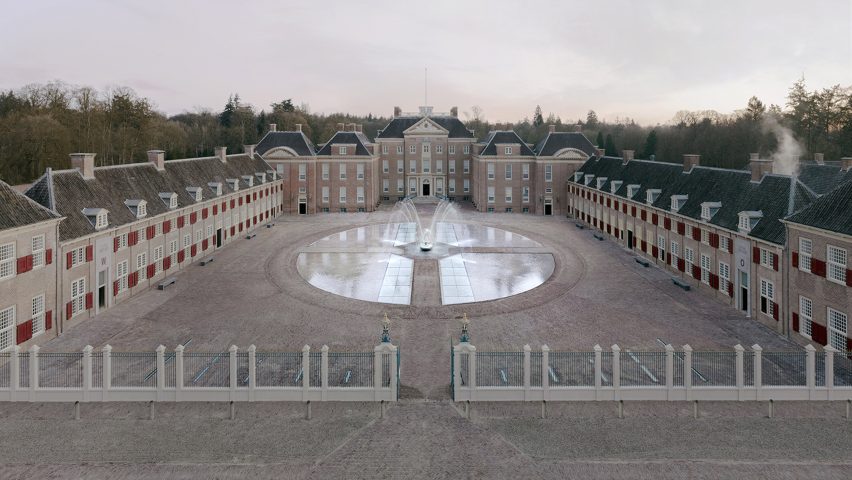
Kaan Architecten's underground extension to Dutch museum is designed to "radiate grandeur"
Dutch practice Kaan Architecten has extended the Museum Paleis Het Loo in Apeldoorn, the Netherlands, concealing over 5,000 square meters of visitor spaces beneath a public courtyard and fountain.
Originally built in 1686 as a royal hunting palace for King William III, the Baroque complex on the outskirts of Apeldoorn has served as a state museum since 1984, but was suffering from dated facilities and fittings and required asbestos removal.
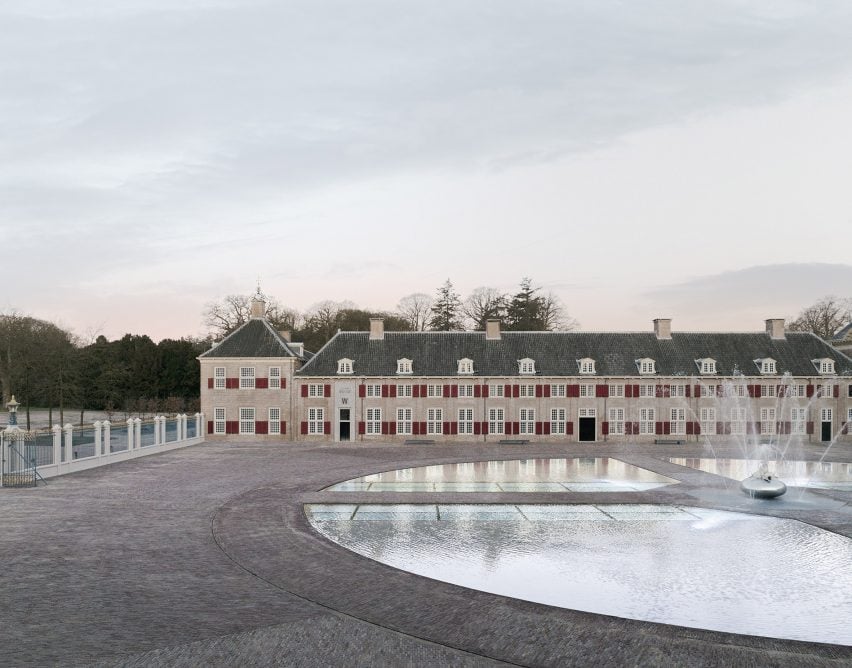
Winning the project through a public competition in 2016, Kaan Architecten sought to retain and continue the feeling of "grandeur" created by the existing buildings. This informed the studio's decision to conceal the extension underground.
Following the symmetrical layout of the palace above, the cavernous interiors have been finished with pale marble, illuminated by skylights beneath a new fountain and a pool of water that creates a dappled light effect.
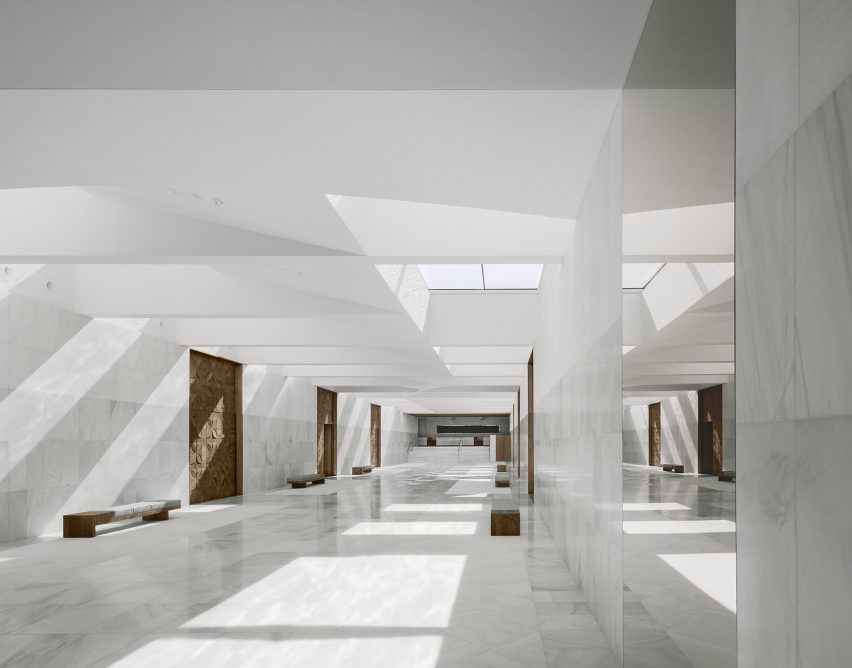
"The underground extension keeps the symmetrical logic of the baroque composition and the palace's corps de logis [main block] as the basic floor plan," said the practice.
"The newly transformed Paleis Het Loo now radiates the grandeur that befits one of the Netherlands' most renowned and frequented museums," it added.
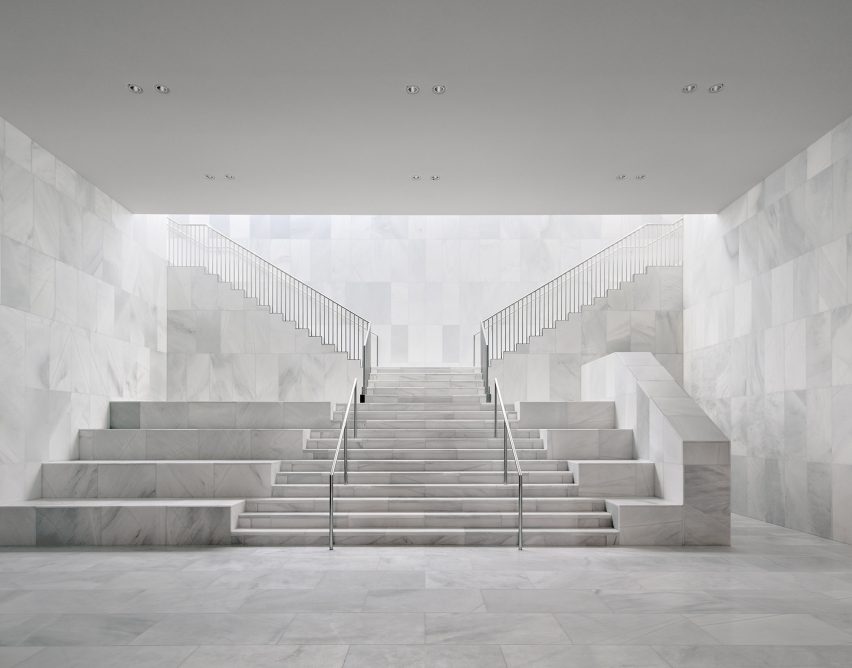
Rather than create a new entrance that would detract from the existing layout, Kaan Architecten positioned two entrances at the end of the palace's wings, where two entrance pavilions lead down into the underground extension.
Once underground, a grand, skylit corridor lined with pale marble connects to an existing staircase to the north of the palace, flanked by a mixture of temporary and permanent exhibition spaces.
"Although its architectural expression is restrained and elegant, the new building befits the grandeur and imagination associated with the term 'palace'," explained the studio.
"Traces of the past remain visible in the subtle marble inlays on the walls where the old structure was hollowed out to create the lantern-like entry pavilions," it continued.
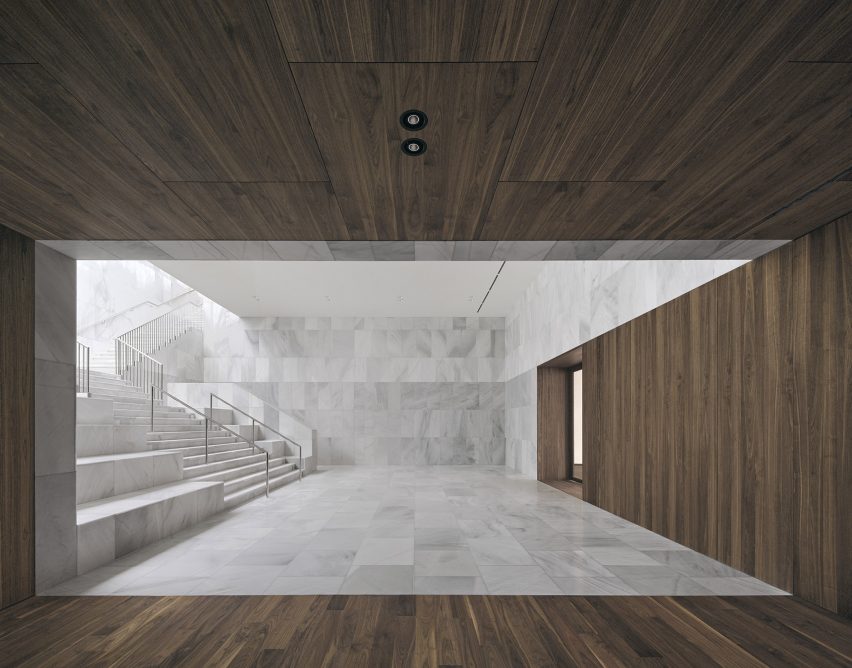
Above, the two narrow wings of the existing palace face each other across the newly-created public square and fountain.
In the western wing, a raised gable form called the "Junior Palace" contains exhibits for children, leading around to a large restaurant in the former ballroom with new seating beneath large chandeliers.
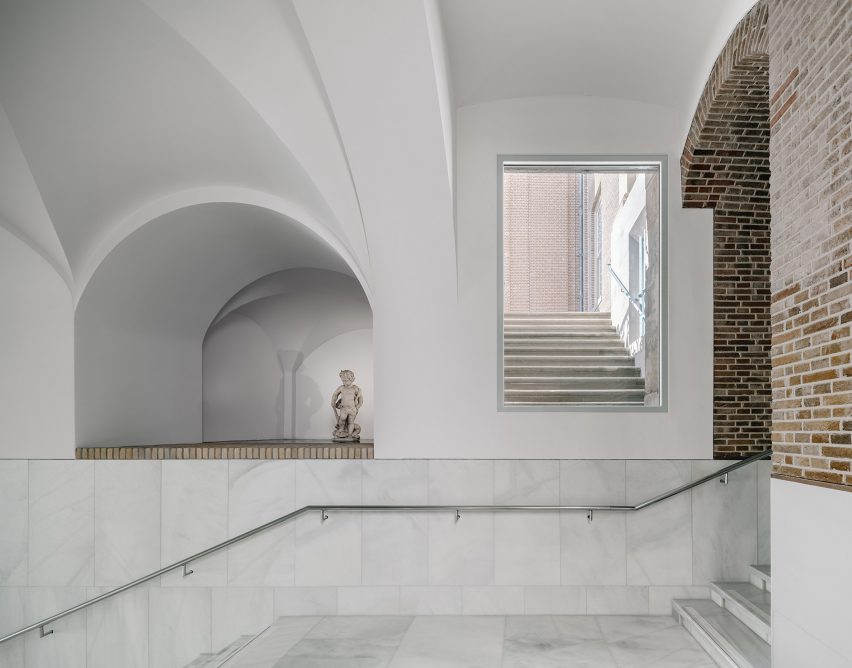
To the east, further permanent exhibition spaces lead to an independent building which contains offices for the museum staff, organised around a small courtyard.
Throughout the project, a minimalist approach has been taken to the interiors, with pale wood flooring and white walls in the new gallery spaces, and simple furniture and white walls contrasting retained woodwork in the existing palace.
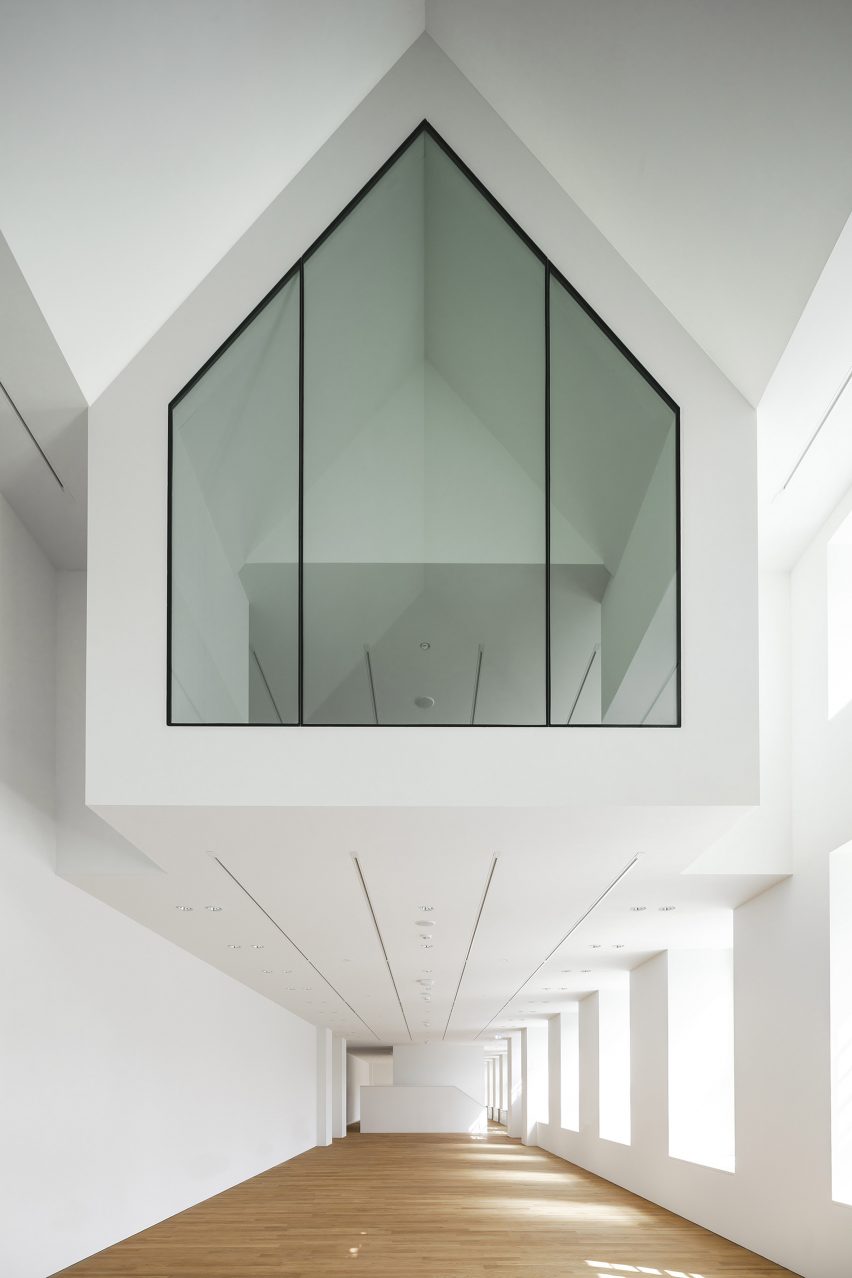
"Subtle textures are layered through alternating sandblasted, honed and polished marble, playfully brought to life by the reflection of natural light through the fountain," said the studio.
The project marks the second high-profile museum extension by Kaan Architecten, which also recently completed a project at the Royal Museum of Fine Arts in Antwerp, which took a similarly minimal approach to an existing 19th-century building.
The studio also designed a geological centre in Germany that was informed by the appearance of a block of stone.
The photography is by Simon Menges unless stated otherwise.